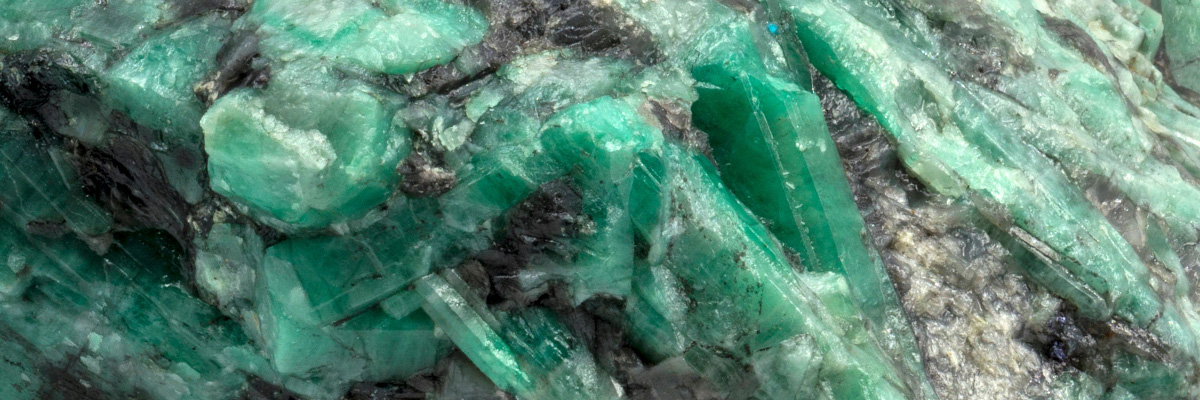Emerald is a variety of beryl, a mineral composed of beryllium aluminum cyclosilicate, and belongs to the hexagonal crystal system. The gemstone is renowned for its mesmerizing green color, which can range from a subtle pale green to a deep, rich hue. This striking color is attributed to the presence of chromium and vanadium impurities within its crystal structure. Emeralds are admired for their vitreous luster and often display a fascinating internal pattern of inclusions, known as the “jardin.”
Usage
The primary usage of emerald is as a highly valued gemstone, often featured in exquisite jewelry designs, including rings, necklaces, earrings, and bracelets. Emeralds are also used in ornamental carvings and as decorative elements in various art pieces. Historically, emeralds have been associated with royalty and have been used as a symbol of wealth and power.
Gemstone
Emerald is an esteemed gemstone, cherished for its captivating green color and its association with love, rebirth, and fertility. The beauty and rarity of emeralds have made them a popular choice for engagement rings, wedding bands, and other meaningful jewelry pieces. The vibrant green color of emerald has been celebrated throughout history, with Cleopatra and the ancient Egyptians among its earliest admirers. Today, emerald continues to be an iconic gemstone, prized for its distinctive allure and timeless elegance.
Origin
Emeralds are formed in nature through the cooling and solidification of magma rich in beryllium, aluminum, and silica. Chromium and vanadium impurities within the crystal lattice give emeralds their remarkable green color. These gemstones typically form in hydrothermal veins and pegmatites, where they develop hexagonal prismatic crystals with slightly tapered ends.
Occurrence
Emeralds can be found in various locations worldwide, with significant deposits in Colombia, Brazil, Zambia, and Zimbabwe. Other notable occurrences include those in Russia, Afghanistan, and the United States. The unique geological settings in these regions, which provide the necessary elements for emerald formation, result in a diversity of hues and crystal sizes.
Metaphysical
In metaphysical and spiritual practices, emerald is believed to possess healing and nurturing energies. The gemstone is said to promote emotional and physical well-being, fostering a sense of balance and harmony. Emerald is also associated with the heart chakra, encouraging love, compassion, and forgiveness. Additionally, the gemstone is thought to enhance mental clarity, intuition, and wisdom, making it an ideal companion for those seeking personal growth and spiritual awakening.
| Class | Cyclosilicates |
| Formula | Be3Al2Si6O18 |
| Luster | Vitreous |
| Hardness (Mohs) | 7.5 – 8 |
| Streak | White |
| Color | Green, varying from pale to deep shades |
| Cleavage | Imperfect, one direction |
| Specific Gravity | 2.67 – 2.78 |


